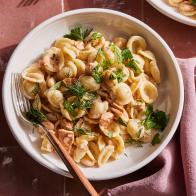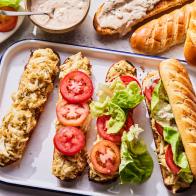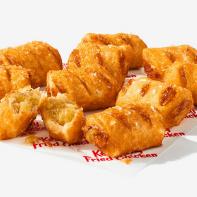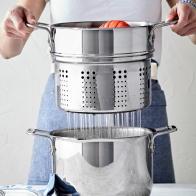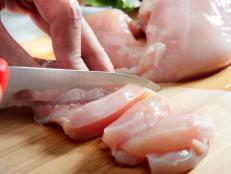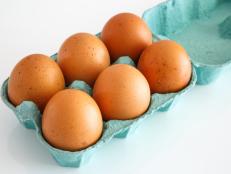How Long Does Cheesecake Last?
Here's how long you can keep this decadent dessert in your kitchen.

Renee Comet
Get the Recipe: Chocolate-Butterscotch Swirl Cheesecake
Cheesecake is a mysterious, yet scrumptious dessert. This chilled and flourless cake can of course be found on restaurant menus, but it is also a frequent flyer in the freezer section of grocery stores and on the countertop of home kitchens. No doubt it’s tasty, but the confusion sets in when it comes to prepping and storing this classic guilty pleasure. We are setting out to make recommendations for best practices for optimal cheesecake enjoyment.
Cheesecake 101
Basic cheesecake recipes are fairly simple. Combine softened cream cheese, eggs, sour cream and desired flavorings that may include lemon, vanilla or even cinnamon or peanut butter. Pour this creamy mixture into a cookie crust (typically made from graham crackers) then bake and chill. Cooking evenly is essential for this luscious cake (no one wants watery, undercooked cheesecake!), so it is typically cooked in the oven partially submerged in a water bath. Perfectly cooked cheesecake can also be achieved using an electric pressure cooker like an Instant Pot.
Unlike many cakes, cheesecake reaches peak deliciousness after being chilled. After baking, it’s imperative that the cake cool slightly on the counter after being removed from the oven and then transferred to the refrigerator to cool completely – a process that takes at least 4 hours or up to overnight. Once chilled, cheesecake can be topped with endless options. Favorite toppers include fresh seasonal fruit, chocolate ganache, fruit syrups, shredded coconut, chopped nuts, and even cookies and candy.
Prep and Storage
For best results, cheesecake batter is made with room temperature ingredients. That said, highly perishable foods like cream cheese and sour cream should not be left out at room temperature for extended periods of time or potentially harmful food borne bacteria can easily multiply. As a general rule, the cream cheese should not be kept out to soften for more than 2 hours at room temperature.
Food Safety Concerns
Soft cheeses like cream cheese are susceptible to a bacteria called listeria. Listeria monocytogenes is a particularly harmful type, risking severe foodborne illness to those exposed – especially if you have a weaker immune system. Pregnant women, young children, those 65 and older and folks on immunosuppressive drugs are more at risk for causing an infection when eating contaminated foods. Illness from listeria infection can range from flu like symptoms to miscarriages in pregnant woman. Once exposed symptoms can set in rapidly (the same day) or may take as long as 70 days someone to fall ill.
According to a report from 2018, listeria outbreaks from soft cheeses are on the rise. Soft cheese made from “raw” (aka unpasteurized) cheese are especially dangerous, increasing the risk of contamination by 160 fold, according to the report by FoodSafetyNews.com.
And it’s not just listeria bacterial contamination for home cooks to be weary of. In January 2019, the FDA issued a recall of Hy-Vee supermarket chain cheesecakes after worries of a salmonella outbreak.
So, what’s a cheesecake lover to do? Play it safe when serving both homemade or prepared cheesecake but following this rule. According to Foodsafety.gov if a power outage leaves your refrigerator incapacitated, cheesecake that has been stores above 40 degrees F for more than 2 hours must be tossed. Apply this same logic when serving cheesecake to guests at home, once that cake comes out of the refrigerator and out at room temperature, you’ve got 2 hours! As soon as that 2 hours has passed it is time to return that cake the fridge or give it a toss. If the temperature is over 90 degrees F then it should be tossed after 1 hour. Prepared cheesecake can be stored in the fridge for 3 to 4 days, per USDA food safety recommendations. We suggest storage in an airtight container, so it doesnt absorb any fridge odors.
Dana Angelo White, MS, RD, ATC, is a registered dietitian, certified athletic trainer and owner of Dana White Nutrition, Inc., which specializes in culinary and sports nutrition. She is the author of four cookbooks First Bites: Superfoods for Babies and Toddlers, The Healthy Air Fryer Cookbook, The Healthy Instant Pot Cookbook and Healthy Quick and Easy Smoothies.
*This article was written and/or reviewed by an independent registered dietitian nutritionist.
Related Links:

